
Best Payroll Software in 2024
A Fair and Balanced Review of the Top 10 Payroll Software Services in 2024
Stay ahead in the game by choosing the right payroll software for your business. This guide dives into a detailed review of the top 10 payroll software services in 2024, spotlighting their standout features and key differentiators. Whether you are a small business owner, a startup, or a large corporation, this guide will help you navigate the complex world of payroll services to find the one that best suits your needs.
Paycom
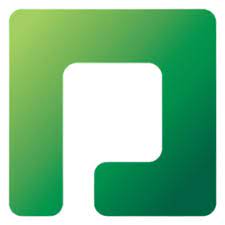
Paycom is one of the most trusted payroll software solutions available today. With its one-stop-shop approach, it helps businesses manage the entire employee lifecycle from recruitment to retirement. The cloud-based system provides user-friendly navigation and robust features for payroll processing, time and attendance, HR management, and talent acquisition.
Paycom offers a suite of payroll and HR services that cater to a broad range of business needs, but like any service, it comes with its pros and cons. Here are two pros and two cons:
Pros:
- Comprehensive all-in-one service: Paycom provides an integrated suite of services that cover the entire employee lifecycle, including payroll services, talent acquisition, performance management, and time tracking among others. This integrated approach simplifies management and enhances efficiency by consolidating various HR functions into one platform, eliminating the need for additional software or manual data entry.
- Dedicated customer service: Each client is assigned a specific service representative at Paycom, who assists with the transition to Paycom and ongoing support. This ensures businesses receive personalized assistance tailored to their specific payroll and HR needs, enhancing the overall customer service experience.
Cons:
- Confusing product names: Some users may find Paycom’s naming conventions for its features confusing. The platform uses unconventional and trademarked names for many of its functions, which could be challenging for new or junior payroll administrators to navigate without confusion.
- Limited international payroll capabilities: While Paycom offers extensive support for payroll processing and HR functions within the United States, it lacks robust support for international payroll processing. Businesses that need to manage payroll in multiple countries might need to look for additional third-party solutions to handle international payments.
These highlights reflect Paycom’s ability to provide a robust, all-encompassing HR software solution with excellent customer service, balanced by challenges related to product nomenclature and international payroll functionalities. Read Full Review
ADP
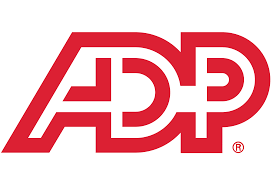
ADP has a long history of delivering payroll services. Its software is available in multiple versions to accommodate businesses of all sizes. With ADP, you get automatic payroll calculations, tax filing services, employee self-service options, time tracking, and HR tools. Its ability to integrate with various third-party systems makes it a versatile choice.
Pros:
- Payroll and HR Features: ADP provides a wide array of payroll and HR features suitable for businesses of all sizes, making it a versatile choice for many organizations.
- Automated Online Payroll Processing: The platform automates numerous tasks, such as depositing wages, calculating withholding taxes, and generating reports, thereby reducing errors and increasing efficiency.
Cons:
- Steep Learning Curve: Some users may find the software challenging to navigate initially, especially those unfamiliar with business software, potentially leading to a slower onboarding process.
- Customer Service Challenges: There have been reports of slow response times and difficult navigation through customer service options, which could be a drawback for users needing quick support.
ADP’s offerings are robust and can significantly benefit companies looking for a high end payroll solution. However, potential users should weigh these benefits against the drawbacks, particularly the software’s learning curve and customer service concerns, to decide if ADP is the right fit for their business needs. Read Full Review
PAYCHEX
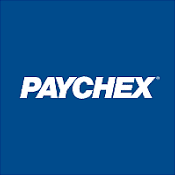
Known for excellent customer service and strong uptime, Paychex is a favorite among small to midsize businesses. It offers an intuitive interface, elite payroll processing, tax filing, direct deposit, and HR features. Paychex also supports benefits administration and retirement services.
Paychex Flex is a comprehensive payroll and HR software solution designed for a range of business sizes, offering a variety of features to manage the employee lifecycle from hiring to retiring. Here are two key pros and cons based on the information available from user reviews and detailed analyses:
Pros
- Comprehensive Features: Paychex Flex offers a robust set of features covering the entire employee lifecycle, including recruitment, payroll, benefits administration, time and attendance management, and HR reporting. Users have access to a dedicated payroll specialist and can benefit from the software’s flexibility, such as the ability to process payroll on the go via a mobile app or using the Paychex “Voice Assist” tool for hands-free payroll processing.
- User-Friendly and Efficient: Many users find Paychex Flex easy to use, appreciating the platform’s ability to streamline payroll and HR processes. The self-service portal is highlighted for enabling employees to update their personal information and view pay and benefit details, thereby enhancing the overall employee experience.
Cons
- Complex Reporting and Limited Customization: Some users find the reporting features in Paychex Flex not intuitive and limited, mentioning difficulties in customizing and extracting specific reports. The database structure also makes it challenging to make bulk changes correctly, which can be a significant drawback for companies needing flexible reporting tools.
- Customer Support Variability: While Paychex offers 24/7 customer support, some users report inconsistent experiences with the support team, including high turnover among account representatives and challenges in resolving issues, particularly related to tax filings and compliance. This inconsistency can impact the overall user satisfaction and operational efficiency. Read Full Review
Gusto
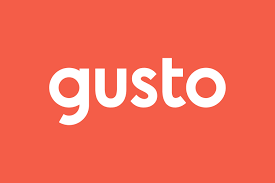
Gusto has built a reputation for being extremely user-friendly. It makes payroll, tax filing, benefits management, and HR tasks easy for small businesses. Gusto’s friendly interface, combined with its robust feature set and excellent customer support, makes it an attractive choice for those new to payroll outsourcing.
- Affordable Full-Service Payroll: Gusto offers unlimited payroll runs, automated tax filings, and benefits without extra charges.
- User-Friendly and Comprehensive: Features a modern interface, extensive third-party integrations, and robust reporting tools.
Cons:
- Cost Jump Between Plans: Significant price increase from Simple to Plus plan could strain small businesses.
- Limited HR Features and Customer Support Issues: Key HR tools are only in the priciest plan, and there’s a growing number of customer service complaints.
SurePayroll

SurePayroll is designed to make payroll processing easy for small businesses and households. It stands out with its automatic tax filing, a user-friendly platform, and a mobile app that allows you to run payroll from anywhere. Its parent company, Paychex, ensures stability and a solid base of features.
Pros:
- Affordable Pricing: It starts at a below-average price, making it accessible for small businesses.
- Comprehensive Integration: Syncs with leading accounting software, offering basic HR tools and very responsive U.S.-based customer support.
Cons:
- Limited Customer Service Hours: Does not provide 24/7 support, which could be a drawback for businesses needing round-the-clock assistance.
- Scalability: Its two plans might not be as scalable for growing businesses, and it only supports domestic payroll without international options.
Rippling

Rippling is a newer entry to the market but has quickly established itself. It’s more than just payroll; it’s an all-in-one system that handles HR, IT, and operations. It offers full-service payroll, benefits, and automated tax services, along with an array of integrations with other popular business apps.
Rippling’s payroll software is recognized for its services and user-friendly design, offering a suite of features that cater to various HR and payroll needs. Here are three pros and two cons of Rippling payroll software, based on the information gathered:
Pros:
- Comprehensive Payroll and Tax Management: Rippling provides a complete payroll solution, handling federal, state, and local tax filings, including forms for employee 1099s and W-2s, ensuring legal compliance. It supports direct deposits and paper checks, and offers detailed payroll reports.
- Extensive Integration and Customization: With an open API, Rippling allows for a high degree of customization and integration with over 500 third-party applications. This capability spans across finance, HR, IT apps, and more, enhancing operational efficiency and flexibility across various business functions.
- Global Payroll Capabilities: Rippling is designed for scalability and global operations, supporting payroll runs for employees outside of the US as easily as those within. This feature is particularly beneficial for large operations or businesses looking to expand internationally.
Cons:
- Complex Setup for Healthcare and Benefits: Some users have found setting up healthcare and benefits through Rippling to be frustrating and confusing. There have been instances where employees were able to sign up for options that the company doesn’t offer, leading to administrative headaches.
- Lack of Direct Customer Support Line: Although Rippling’s customer support is generally rated highly, the absence of a direct customer support phone line can be a limitation for users who prefer real-time, verbal communication to resolve urgent issues. Inquiries and support requests are handled via email, which may not be ideal for all users.
These insights provide a balanced view of Rippling’s payroll software, highlighting its strong features in payroll processing, integrations, and global capabilities, as well as areas where some users have experienced challenges. Read Full Review
QuickBooks Payroll
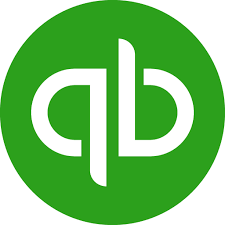
This software solution by Intuit is a great choice for businesses already using QuickBooks for their accounting needs. It offers automated payroll, tax calculations, direct deposits, and a portal for employees to check their paystubs and W2s.
QuickBooks Payroll is a popular payroll software that integrates seamlessly with QuickBooks accounting software, offering businesses an efficient way to manage payroll and accounting tasks. Here are three pros and two cons of using QuickBooks Payroll, along with descriptions for each:
Pros
- Integration with QuickBooks Accounting Software:
- QuickBooks Payroll is designed to work seamlessly with QuickBooks accounting software, providing a unified platform for managing both payroll and accounting data. This integration simplifies financial management by automatically updating financial records with payroll transactions, reducing the need for manual data entry and minimizing errors.
- Automated Tax Calculations and Filings:
- One of the key benefits of QuickBooks Payroll is its ability to automatically calculate and file payroll taxes. The software stays up-to-date with the latest tax rates and regulations to ensure accuracy. It can automatically fill out tax forms and even submit them to the appropriate agencies, saving business owners time and reducing the risk of penalties associated with late or incorrect filings.
- Ease of Use and Access:
- QuickBooks Payroll is designed with a user-friendly interface that makes it easy for business owners and managers to run payroll and manage employee information. Additionally, being a cloud-based solution, it allows for access from anywhere at any time, enabling users to manage payroll tasks on the go, which is especially beneficial for small and medium-sized businesses that might not have dedicated payroll departments.
Cons
- Cost:
- Compared to some other payroll solutions, QuickBooks Payroll can be more expensive, especially for small businesses or startups with tight budgets. The cost escalates with the addition of more employees or when opting for higher tiers of service that include features such as same-day direct deposit or personalized HR support.
- Complexity in Advanced Features:
- While QuickBooks Payroll is praised for its ease of use, some users may find the setup process for more advanced features a bit complex. Businesses with unique payroll requirements or those needing to customize the software extensively might require additional time to understand and configure these settings properly. This can sometimes necessitate reaching out to customer support or hiring a professional, which can add to the overall cost and time investment.
QuickBooks Payroll offers a comprehensive and integrated solution for payroll and accounting tasks with significant advantages in automation, ease of use, and accessibility. However, potential users should also consider the cost implications and the potential need for additional support when utilizing its more advanced features.
Zenefits
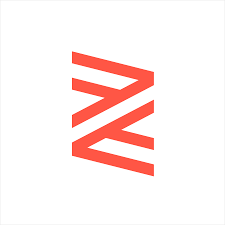
Zenefits is a powerful HR software that includes payroll services. Known for its customizable and user-friendly platform, it also excels at employee management and benefits administration. Zenefits is great for businesses looking for a holistic approach to their HR needs.
Zenefits payroll software offers a range of features and options that cater to various business needs. Here are two pros and cons of Zenefits payroll software, based on the information gathered:
Pros:
- Ease of Use: Zenefits is known for its user-friendly interface, making it easy for both HR professionals and employees to navigate. The software offers seamless onboarding of new employees and contractors, straightforward setup for first-time users, and reliable performance for everyday use, including payroll runs and software UI. The cloud-based system is designed with a simple and intuitive interface that sports a modern aesthetic, aiming to make HR tasks less daunting.
- Comprehensive Features: The software includes a wide range of HR and payroll features. For payroll specifically, Zenefits allows unlimited payroll runs, supports direct deposit along with multiple pay rates and schedules, and offers mobile pay stub access among other features. It’s also equipped to handle benefits administration, time tracking, payroll taxes, onboarding, and HR management, making it a versatile choice for businesses looking to manage multiple aspects of employee administration through one platform.
Cons:
- Cost Considerations: While Zenefits offers flexible pricing plans, the addition of essential services like payroll, advisory services, and benefits administration to the base plan can significantly increase the overall cost. This could become burdensome, especially for smaller businesses that are sensitive to price. The need to subscribe to base plans before adding payroll services may also add to the expenses, making it important for businesses to carefully consider their needs against the software’s pricing structure.
- Support and Complexity for Larger Businesses: Some users have reported slow response times from support, which could be a drawback for businesses that rely on timely assistance for their HR operations. Additionally, while Zenefits is praised for its ease of use and streamlined processes, larger businesses or those with more complex HR and payroll needs might find the software lacking in terms of flexibility and customization. HR managers accustomed to robust customization options might feel constrained by the more guided approach Zenefits takes.
In summary, Zenefits offers a user-friendly, feature-rich platform that can significantly streamline HR and payroll processes for small to medium-sized businesses. However, its cost structure and potential limitations in customization and support responsiveness are important considerations for potential users.
Square Payroll

Square Payroll is particularly suited to businesses with hourly employees. It integrates seamlessly with Square POS, making time-tracking and payroll effortless. Features include automatic tax filing, direct deposits, and an easy-to-use platform.
Square Payroll offers a mix of benefits and drawbacks for businesses considering it for their payroll processing needs. Here are two pros and two cons based on user reviews and feature analysis:
Pros:
- Ease of Use and Integration: Users appreciate Square Payroll for its ease of use, including straightforward setup and the ability to add new employees quickly. It integrates seamlessly with Square’s ecosystem, including its POS system, which can automatically track employee hours for payroll. This makes it a convenient choice for businesses already using Square for other services.
- Comprehensive Payroll Features: Square Payroll supports a wide range of payroll functions, such as multiple pay rates, multi-state payroll, overtime calculations, PTO and sick leave tracking, and benefit deductions. It also handles tax filings and payments automatically, generates necessary forms like W-2s and 1099s, and offers flexible pay schedules. These features simplify the payroll process significantly for businesses.
Cons:
- Cost Considerations: While Square Payroll is generally praised for its functionality, some users find it to be on the expensive side, especially small businesses watching their budgets closely. This perception of high cost may be due to the base fee plus additional per-employee charges, making it less attractive for businesses with tight financial constraints.
- Customer Support Issues: Despite offering U.S.-based customer support, some users report slow response times and less-than-satisfactory support experiences, particularly with the payroll department. This can be a significant drawback for businesses that value prompt and effective customer service to address their concerns and issues.
In summary, Square Payroll is well-regarded for its ease of use, comprehensive features, and seamless integration with the Square ecosystem, making it a solid choice for many businesses. However, concerns about its cost and customer support may lead some businesses to consider alternatives.
Factors to Consider When Selecting Payroll Software
Selecting the best payroll software service involves considering several key factors that depend on your business needs. Here are the main criteria to consider:
Ease of Use
The software should have a user-friendly interface that’s easy to navigate. It should allow for straightforward setup and operation without requiring excessive time or a steep learning curve.
Features
Determine the specific features your business needs. This can range from basic payroll processing, tax calculations, and direct deposit, to more advanced capabilities like HR management, benefits administration, employee self-service portal, and integrations with time tracking or accounting software.
Compliance
The software should stay current with the latest tax laws and payroll regulations at the federal, state, and local level. Look for features like automatic tax updates and year-end tax form processing.
Scalability
The payroll system should be able to grow with your business. If you’re planning to expand, make sure the software can handle more employees, multiple locations, and increased complexity.
Customer Support
Good customer service is crucial for troubleshooting and assistance. Check if they offer support through multiple channels like phone, email, live chat, or a help center. It’s also beneficial if they offer support during your business hours.
Cost
Understand the pricing structure. Some providers charge a base monthly fee plus a per-employee cost, while others offer different pricing tiers based on the features included. Make sure to factor in any setup or additional fees.

Integration
The payroll service should ideally integrate with other systems you use in your business, such as time tracking, accounting, or HR software. This ensures seamless data flow and reduces the need for manual data entry.
Reliability
The provider should have a solid track record of reliability, including accurate payroll processing and timely updates.
Reviews and Reputation
Look at reviews from other businesses similar to yours to get a sense of the software’s reputation. Positive feedback regarding its usability, features, and customer support can be a strong indicator of its quality.
Security
Since payroll involves sensitive personal and financial information, the software must have robust security measures in place, such as data encryption and two-factor authentication.
Every business is unique, so it’s crucial to select a payroll software service that best fits your specific needs and priorities.
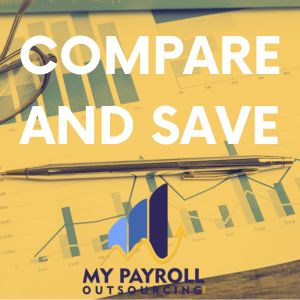
Once you have defined your criteria, follow these additional steps to ensure you select the best payroll software service:
- Understand Your Needs: Before you begin your search, take the time to identify what you need from a payroll service. Consider the size of your company, whether you have full-time or part-time employees or contractors, the complexity of your payroll, and any specific features you may need like benefits administration, HR functions, or tax services.
- Research: Once you have a clear idea of your needs, begin researching potential providers. Look at their features, prices, and customer reviews. Consider reaching out to other businesses in your industry to see what software they use and if they would recommend it.
- Free Trials/Demos: Many payroll service providers offer free trials or demos of their software. Take advantage of these to test the software’s usability and features. This step can give you a clear idea of whether the software will meet your needs before you make any commitments.
- Ask Questions: Don’t hesitate to reach out to the providers with any questions you may have. This can be a good opportunity to gauge their customer service responsiveness and get clarity on any features or terms you’re unsure about.
- Negotiate: After you’ve narrowed down your choices, try to negotiate with your preferred provider(s). You might be able to get a discount, extra features, or waive setup fees.
- Make the Decision: After thoroughly evaluating the options, make your decision based on the software that best fits your criteria and feels like the right fit for your business. Remember, the cheapest option isn’t always the best if it doesn’t meet all your needs.
Finally, once you’ve made your choice, be sure to review your software regularly to ensure it continues to meet your needs as your business grows and changes. Payroll software services often update and add new features, so you’ll want to stay current with these changes to get the most out of your investment.
FAQ
Remember, it’s crucial to do your research and choose the payroll software that best fits your business needs.
Trends to Watch For
In the payroll software industry, several trends continue to evolve in 2024, largely driven by advancements in technology and changing workplace dynamics.
- Cloud-Based Services: As businesses continue to shift towards remote work environments, the demand for cloud-based payroll services is increasing. These services allow access to payroll systems from any location and offer real-time data processing.
- Integration: Companies are seeking payroll solutions that seamlessly integrate with other business management software like HR systems, time tracking, benefits, and accounting software. This reduces manual data entry, enhances accuracy, and improves efficiency.
- Mobile Access: As more businesses embrace flexible work arrangements, having mobile access to payroll software is becoming more crucial. Mobile apps for payroll allow both managers and employees to access payroll data, submit time-off requests, view payslips, and more, all from their smartphones.
- AI and Automation: Artificial intelligence and automation continue to make inroads in the payroll sector. Companies are using AI to automate repetitive tasks, reduce errors, and streamline the payroll process. This can help to improve efficiency, accuracy, and compliance.
- Data Security and Privacy: With the rise in remote work and cloud-based systems, data security and privacy are more important than ever. Expect to see enhanced security measures in payroll systems, such as two-factor authentication, data encryption, and regular security audits.
- Personalization and Customization: Businesses are increasingly seeking payroll software solutions that can be customized to fit their unique needs, whether it’s for a specific industry, size, or operational model.
- Real-time Reporting: Companies are seeking solutions that offer real-time reporting and analytics, helping them make data-driven decisions.
- Global Payroll Management: As businesses become more globalized, managing payroll across different countries is a growing challenge. Look for more solutions that handle multi-country payroll, tax compliance, and reporting.
- Self-Service Portals: Employee self-service portals are becoming more common. These portals allow employees to access their payslips, tax information, and personal details, reducing HR’s workload and empowering employees.
- Green Payroll: More companies are opting for paperless payroll solutions in an effort to be more environmentally friendly. This includes digital payslips, tax forms, and other payroll documents.
These trends reflect the ongoing evolution of the payroll software industry as it continues to adapt to changing business needs and technological advancements.